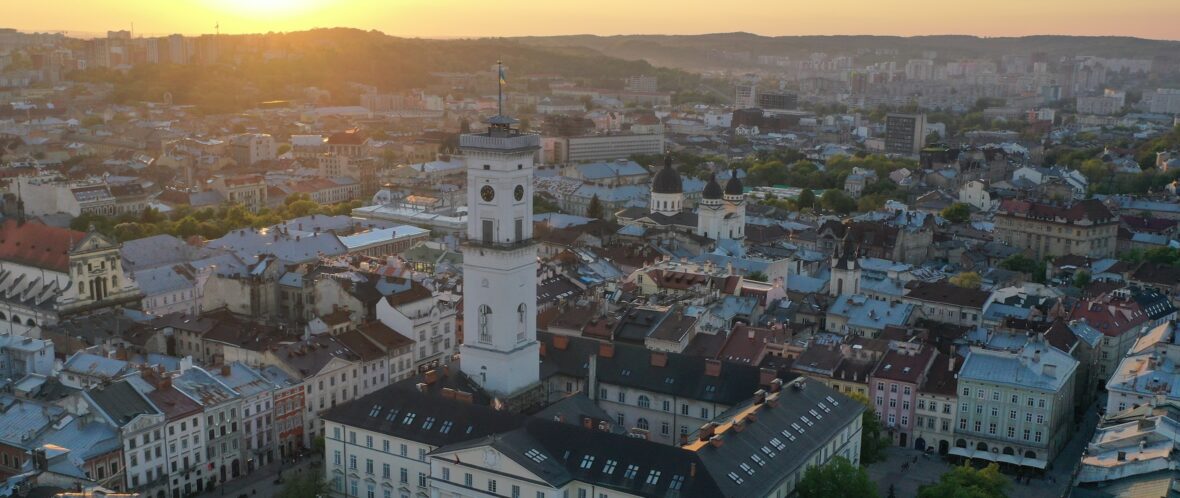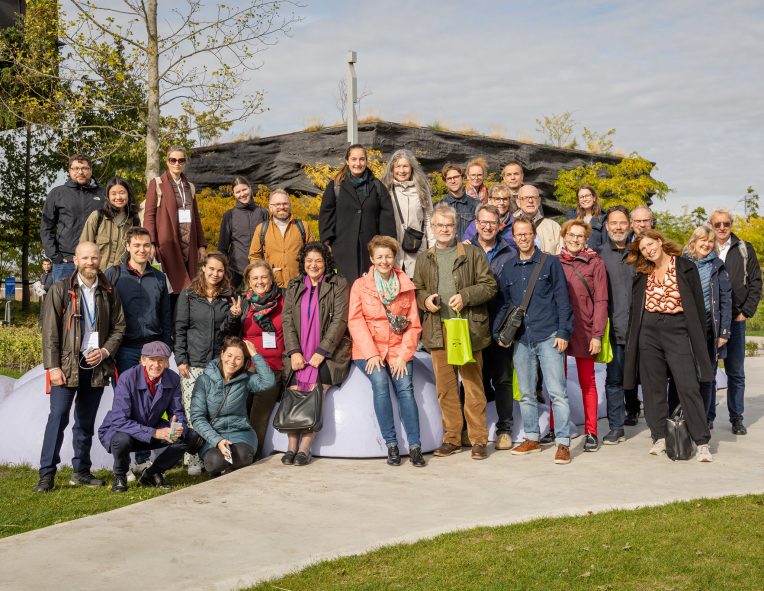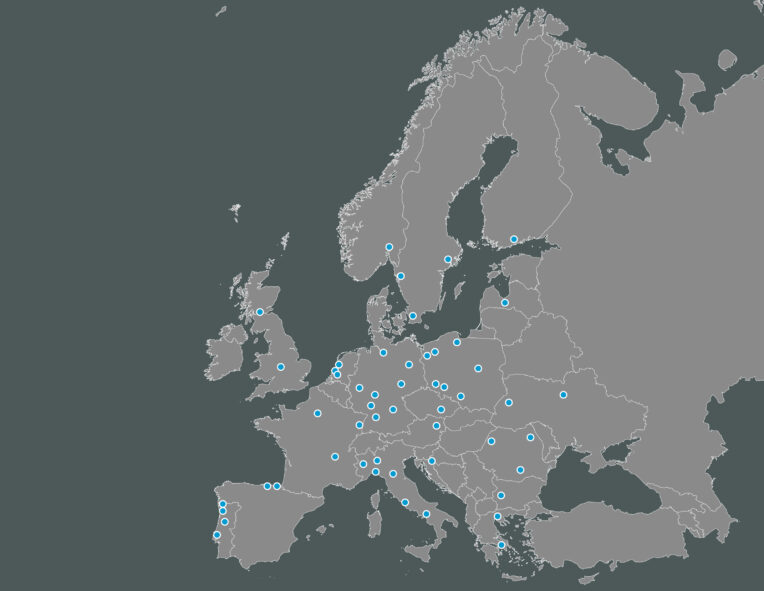Rynok sq, 1
37008, Lviv
tel. +380 96 008 47 11
e-mail: lviv.agglomeration@gmail.com
Primary METREX contacts
About Lviv Agglomeration
The Lviv Agglomeration Development Strategy was established in 2023. This strategy is a foundational framework for the ongoing collaboration and development among communities within the Lviv agglomeration, utilizing various formats. The Strategy shows its dedication to building a successful, sustainable, and globally competitive urban centre in Eastern Europe.
During the Lviv Self-Government Forum on November 29, 2023, the leaders of territorial communities in Lviv and neighbouring areas signed a joint memorandum to foster cooperation and establish the "Lviv Agglomeration" association of local authorities.
The Lviv Agglomeration is one of the seven agglomerations identified in the State Strategy for Regional Development 2021–2027 (2020 edition) and the only one located in western Ukraine, alongside Kyiv, Dnipro, Zaporizhia, Kryvyi Rih, Odesa, and Kharkiv. It operates as an Association of Local Authorities uniting 13 municipalities: five urban (Bibrska, Horodotska, Zhovkivska, Lvivska, Pustomytyvska), three semi-urban (Velykolyubinska, Kulykivska, Novoyarychivska), and four rural (Davydivska, Zhovtanetska, Obroshynska, Pidberiztsivska, Murovanska).
Covering an area of 2,515 km², the agglomeration is home to 1.05 million people, of whom 79% are urban residents and 21% rural. Although it occupies only 15% of the territory of the Lviv region, it concentrates around 40% of the region’s population. Its core is the city of Lviv, with a population of 800,000.
Economically, the agglomeration forms the region’s primary growth pole: 72% of all active enterprises in the Lviv region are registered within its municipalities, generating 64% of total regional revenues from product sales. It attracts two-thirds of capital and foreign direct investment and accounts for more than 90% of the region’s innovation potential.
The Lviv Agglomeration is a key transport hub. Fourteen national roads pass through its territory, and nine railway branches converge in Lviv. Work is already underway to upgrade rail sections between Ukraine and Poland to the European standard narrow gauge. The area is crossed by two pan-European transport corridors—No. 3 (Berlin/Dresden–Wroclaw–Lviv–Kyiv) and No. 5 (Trieste–Ljubljana–Budapest/Bratislava–Lviv–Kyiv)—as well as the Europe–Asia corridor (Frankfurt–Krakow–Lviv–Dnipro–Almaty). Lviv is also home to Knyaz Danylo International Airport, which was the second busiest in Ukraine for passenger traffic before the full-scale invasion.
The agglomeration is rich in cultural and natural heritage. It hosts two UNESCO World Heritage Sites—the Historic Center of Lviv and the Church of the Holy Trinity in Zhovkva—along with three national historical and cultural reserves, 2,246 immovable cultural heritage monuments (including 180 of national significance), and 100 elements of intangible cultural heritage. Green zones make up 26% of the total area.
Lviv plays a central role in the daily life of residents of surrounding municipalities: 68% visit the city regularly, with a third doing so two to three times per week or more, and in 43% of households, at least one member works in Lviv. A shared sense of regional identity is also strong—85% of inhabitants (and 75% in neighbouring communities) consider themselves residents of Greater Lviv/the Lviv Agglomeration, and 88% support inter-municipal cooperation within it.
Major projects
- Unbroken National Rehabilitation Center
During the russian military aggression, Lviv stands resilient, showcasing an unwavering spirit and solidarity. Lviv has hosted more than 5 million refugees. The city actively supports Ukrainian forces, providing humanitarian aid and serving as a hub for volunteers. Despite the challenges, Lviv remains open to the world, fostering international support and solidarity. The National Rehabilitation Center «Unbroken» is a unique facility where adults and children who have suffered from the consequences of war receive comprehensive and qualified medical assistance. Since the onset of the full-scale invasion, the center has provided treatment for over 15,000 injured Ukrainians, including 350 children. The center specializes in reconstructive surgery, orthopedics, and prosthetics. Additionally, the center focuses on physical, psychological, and psychosocial rehabilitation. «Unbroken» strives to fulfill its mission of saving, prosthetizing, and rehabilitating Ukrainians within the country.
https://unbroken.org.ua/ua - Interreg Embracer – focuses on strengthening inter-municipal cooperation, sharing experience with European metropolitan regions, and enhancing social cohesion across member municipalities.
- Interreg Smooty – dedicated to mobility and transport integration in the Lviv Agglomeration, piloting suburban transport solutions and improving coordination of public transit services.
- SpongeWorks (Horizon Europe) – part of an international consortium on “sponge city” approaches. The Lviv Agglomeration, as an Associated Region, develops surface water management, green-blue infrastructure, and climate adaptation measures.
- Logistics Hub (Ukraine–Moldova Americam Enteprice Fund) – design and development of a joint logistics hub integrated into pan-European transport corridors, enhancing Lviv’s and the agglomeration’s transit potential.
- Waste Management (Council of Europe) – creation of a joint waste management system for all agglomeration municipalities, including a waste management plan, inter-municipal mechanisms, and staff capacity building.
- Unbroken National Rehabilitation Center
Planning issues
- Integrated system of transportation mobility and road safety improvement
- Joint development of water supply and drainage infrastructure
- Comprehensive waste management system
- Preservation of the natural environment and the network of “green” and “blue” spaces
- High quality and accessibility of key services in education, healthcare, social protection, and culture
- Rehabilitation cluster at the national level



